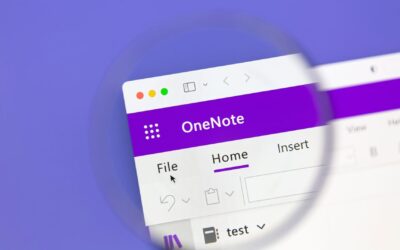I thoroughly enjoy helping businesses find the money.
I’ve been in the MSP business since 2003 and my interest in this topic borders on the obsessive. Identifying waste and putting dollars to more efficient use never gets old.
Integris recently spoke with a business owner who likened managed IT services effectiveness to miles per gallon in an automobile.
For example, a managed service provider (MSP) that can resolve more support tickets per dollar would be better. In other words, more is more. He values more frequent intervention and remediation.
The purpose of this article is two-fold: (1) Analyze the cost implications of the “more miles per gallon mindset” and (2) Illuminate the reasons why the existence of fewer tickets is a more meaningful measure of value delivered.
Reactive IT Support
When someone on your team encounters an obstacle related to technology, it’s nice to know they can reach out for an assist.
However, engaging technical support is like pulling your car over to have a mechanic run diagnostics on it. You stop moving. There’s a hard pause in your work routine.
One person with the occasional hour of superficial problems (password resets and printer problems) is one thing.
But the inconvenience is a lot less trivial when the same experience is shared by twenty or two-hundred other people, over and over again. The aggregate resolution time grows. And we’re only talking about brief pit stops here.
Have you considered larger systemic IT issues? Can you identify the root causes?
The following scenarios are common, far from insignificant, and will wreak severe havoc with your operating peace of mind:
- Half the company is on Office 365 and the other half is using Gmail
- Your primary line of business applications are cloud-based and when your primary Internet service drops, the connection does not automatically failover to a secondary ISP service
- You recently upgraded to a 100Mb Internet connection but your firewall is only capable of processing a 50Mb connection
- An official password management policy is not in force
- A large percentage of your team ignores system update alerts and refuses to reboot their machines
- Due to VPN issues, your file shares are difficult to reach (in the office and at home) so users save time by storing confidential documents on their desktops, laptops, or unapproved cloud services like DropBox or iCloud
- Your network includes a lot of nonstandard equipment that is end-of-life
- Your accounting department uses an ancient software program that only works on an older operating system, which is no longer supported by Microsoft and not receiving security patches and updates
Each of these examples (culled from actual client encounters over the last decade) have resounding business impact. And they only get more disruptive over time, compromising user productivity and morale.
Are you really getting maximum value from your MSP because they resolve a high volume of tickets?
What if they’re the reason you have an elevated density of tickets in the first place?
Proactive IT Support
While the previous section describes the IT experience as a squiggly line between a starting point and a final destination, this one employs the analogy of a straight line.
Strategic IT is focused on selecting, maintaining, and managing a fleet of “vehicles” that are fine-tuned for motion, momentum, and agility. The big idea is better mileage with fewer stops.
An MSP who brings this vision to life is still doing a considerable amount of work in the way of internal tickets. However, a majority of their efforts are preventative measures focused on “behind the scenes” activities:
- Monitoring, managing, securing, and supporting IT systems with automated tools that perform system updates, install patches, and facilitate integrations that make your technology less susceptible to hiccups
- Utilizing business intelligence gathered from Professional Services Automation (PSA) and Remote, Monitoring and Management (RMM) software to analyze trends and make recommendations that promote more fault-tolerant IT systems
- Provide ongoing consulting services (included in your agreement at no extra charge) to ensure IT is aligned with your three and five-year business goals
For instance, Integris (or another strategy-first oriented MSP), will reimagine every “havoc-wreaking” variable in your environment and methodically guide the transition to quieter systems that don’t require constant hand-holding and remedial attention.
A Strategic IT Roadmap is used to manage each endpoint in your digital estate. Prioritized by low, medium, or high business risk, the following technology categories are continuously analyzed, addressed, and refined:
- Business Continuity
- Hardware
- Network Infrastructure
- Security
- Software
Would you like to improve efficiency, security, compliance, or something else?
It’s all part of a conversation that sets the stage for an IT environment less prone to the proliferation of tickets.
What’s Next?
Reactive IT can lead to two weeks of downtime per year. Assuming your annual revenues are $5,000,000.00, that’s a loss of roughly $193,000.00.
Do you want a strategic IT partner or a ticket processing shop?
What if your ticket volume reaches a critical mass your MSP will not be able to handle?
While the ability to fix a lot of problems for any client is laudable, there is much greater value in reducing ticket count. And it takes a different kind of effort to eliminate issues before they materialize.
The Integris team has decades of experience, and we look forward to helping you understand that IT success is based on a series of non-events.



